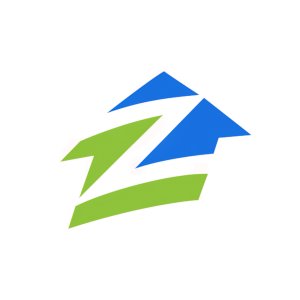To afford a monthly mortgage payment, middle-class Americans need to put more than $127,000 down
Rhea-AI Summary
A new analysis by Zillow reveals that to comfortably afford a typical U.S. home, a buyer earning the median income needs to put down $127,750, or 35.4%. This is significantly higher than five years ago when no down payment was necessary due to lower home values and mortgage rates. This increase highlights how the pandemic and rising mortgage rates have affected housing affordability. Around 43% of last year's buyers used financial gifts for their down payments, the highest since 2018. While many U.S. markets remain unaffordable, places like Pittsburgh offer more accessible housing options without a significant down payment.
Positive
- Pittsburgh offers the most affordable housing, with no down payment needed.
- Down payment assistance programs are available nationwide, with over 2,373 programs.
- In Minneapolis, down payment assistance can reduce the required down payment from 27% to 21%.
Negative
- A median-income household now needs to put down $127,750 to afford a typical U.S. home.
- Home values and mortgage rates have significantly increased over the past five years.
- In Los Angeles, a median-income household needs an 81.1% down payment to afford a typical home.
- San Jose requires over $1.3 million down payment, more than the home value in other major markets.
- High mortgage rates have led to decreased housing affordability and increased competition among buyers.
News Market Reaction 1 Alert
On the day this news was published, ZG declined 0.13%, reflecting a mild negative market reaction.
Data tracked by StockTitan Argus on the day of publication.
Forty-three percent of last year's home buyers used a gift from family or friends to help with their down payment, the most since at least 2018
- A median-income household would need to put
35.4% down to afford the payments on a typicalU.S. home. - Five years ago, the typical
U.S. home would have been affordable to a median-income household with no money down. - A typical home is affordable to a median-income household with
20% down or less in 10 of the 50 biggestU.S. markets.
That
The enormous gap between the down payment needed now and five years ago underscores how the pandemic fueled a scorching-hot housing market, and why the rise in mortgage rates in the time since has cooled the market. Stubbornly high mortgage rates have pushed both buyers and sellers to the sidelines. With so few homes for sale, competition is stiff among the remaining buyers.
"Down payments have always been important, but even more so today. With so few available, buyers may have to wait even longer for the right home to hit the market, especially now that buyers can afford less. Mortgage rate movements during that time could make the difference between affording that home and not," said Skylar Olsen, chief economist at Zillow. "Saving enough is a tall task without outside help — a gift from family or perhaps a stock windfall. To make the finances work, some folks are making a big move across the country, co-buying or buying a home with an extra room to rent out. Down payment assistance is another great resource that is too often overlooked."
To save up
There are still affordable pockets of the
For those who qualify, down payment assistance can amplify savings and help a buyer enter homeownership more quickly. In
"Homeownership is the primary source of net worth and generational wealth for most Americans, and declining affordability is making it harder for average earners to get their foot in the door of an entry-level home. Luckily, there are more than 2,373 down payment assistance programs nationwide with at least one program in every county and 10 or more programs available in 2,000 counties," said Down Payment Resource Founder and CEO Rob Chrane. "In fact, down payment assistance providers have responded to the difficult housing market by increasing the number of programs offered and expanding inventory options with support for manufactured homes and owner-occupied multi-unit homes."
Every for-sale listing on Zillow displays available down payment assistance programs that a buyer may qualify for.
Metro Area* | Typical | Down Payment | Down Payment | Years to | Average Down |
35.4 % | 12.0 | ||||
75.3 % | 27.4 | ||||
81.1 % | 36.3 | ||||
29.8 % | 8.8 | ||||
40.0 % | 12.9 | ||||
24.7 % | 7.9 | ||||
33.1 % | 11.2 | ||||
28.6 % | 9.2 | ||||
64.5 % | 24.1 | ||||
30.5 % | 10.1 | ||||
61.7 % | 23.1 | ||||
40.3 % | 14.8 | ||||
75.0 % | 31.5 | ||||
61.4 % | 23.6 | ||||
9.5 % | 2.8 | ||||
61.3 % | 23.7 | ||||
27.0 % | 8.6 | ||||
75.5 % | 32.5 | ||||
47.3 % | 16.6 | ||||
50.5 % | 18.7 | N/A | |||
25.9 % | 8.5 | ||||
4.2 % | 1.2 | ||||
48.3 % | 17.0 | ||||
38.6 % | 13.7 | ||||
31.8 % | 9.7 | ||||
53.3 % | 19.8 | ||||
57.6 % | 21.7 | ||||
0 % | 0 | ||||
20.7 % | 6.4 | ||||
44.9 % | 14.7 | ||||
46.4 % | 17.6 | ||||
24.8 % | 7.9 | ||||
26.7 % | 8.5 | ||||
9.8 % | 3.1 | ||||
13.7 % | 4.0 | ||||
80.9 % | 36.2 | ||||
45.6 % | 16.7 | ||||
32.2 % | 10.9 | ||||
53.4 % | 19.0 | ||||
32.3 % | 10.8 | ||||
39.3 % | 13.4 | ||||
13.3 % | 3.9 | ||||
33.9 % | 11.8 | ||||
12.7 % | 4.1 | ||||
28.3 % | 9.6 | ||||
18.1 % | 5.7 | ||||
19.1 % | 6.0 | ||||
45.7 % | 17.1 | ||||
35.7 % | 11.0 | N/A | |||
N/A | N/A | N/A | |||
7.6 % | 2.4 | N/A |
*Table ordered by market size | |
**Assuming a household saves | |
***Source: Down Payment Resource. The average amount of down payment assistance that a qualified household could receive for the purchase of a starter home. |
About Zillow Group
Zillow Group, Inc. (Nasdaq: Z and ZG) is reimagining real estate to make home a reality for more and more people. As the most visited real estate website in
Zillow Group's affiliates, subsidiaries and brands include Zillow®, Zillow Premier Agent®, Zillow Home Loans℠, Trulia®, Out East®, StreetEasy®, HotPads®, ShowingTime+℠, Spruce® and Follow Up Boss®.
All marks herein are owned by MFTB Holdco, Inc., a Zillow affiliate. Zillow Home Loans, LLC is an Equal Housing Lender, NMLS #10287 (www.nmlsconsumeraccess.org). © 2024 MFTB Holdco, Inc., a Zillow affiliate.
1Estimated monthly mortgage payments include principal and interest based on the typical home value according to the Zillow Home Value Index and prevailing mortgage rates according to Freddie Mac, plus estimates for property taxes, homeowners' insurance and maintenance.
![]() View original content to download multimedia:https://www.prnewswire.com/news-releases/to-afford-a-monthly-mortgage-payment-middle-class-americans-need-to-put-more-than-127-000-down-302176421.html
View original content to download multimedia:https://www.prnewswire.com/news-releases/to-afford-a-monthly-mortgage-payment-middle-class-americans-need-to-put-more-than-127-000-down-302176421.html
SOURCE Zillow









